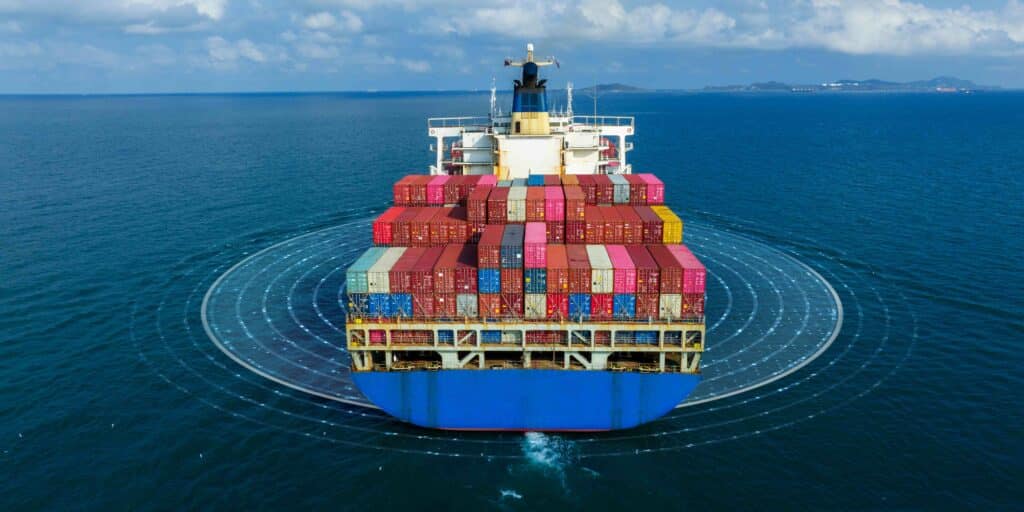The maritime sector is one of the most demanding industries when it comes to industrial equipment and mechanical components. Harsh conditions—such as saltwater, high humidity, constant vibrations, and extreme temperatures—put the durability and reliability of every component to the test. Transmission solutions used in this field must be able to withstand these challenges, ensuring vessels and maritime structures operate safely and without interruption.
In this article, we explore the most advanced transmission solutions for the maritime sector, including specialized bearings, chain transmission systems, and corrosion-resistant materials. We’ll also examine how these solutions are designed to endure extreme environments and improve the operational efficiency of ships and offshore platforms.
🌊 The Harshest Conditions in the Maritime Sector
The maritime sector covers a wide range of applications—from cargo ships to offshore oil platforms, submarines to fishing vessels. All of these operate in extremely demanding environments, where transmission systems must withstand:
-
Saltwater corrosion: Saltwater is one of the most damaging corrosive agents for metals, causing rust and long-term degradation.
-
High vibrations: Caused by constant ship movement and propulsion forces, vibrations stress mechanical components.
-
Extreme temperatures: Systems must function from frigid polar waters to the high heat of ship engines.
-
Heavy mechanical loads: Transmission systems must handle high loads and prolonged operational stress.
⚙️ Transmission Solutions for the Maritime Industry
1. Corrosion-Resistant Bearings
Bearings are a key element in maritime transmission systems. They must resist salt corrosion and limited lubrication—common issues in marine environments.
-
Specialized materials: Stainless steel or ceramic bearings are preferred for their corrosion resistance. Protective coatings such as PTFE further increase durability.
-
Sealed bearings: Labyrinth seals or triple-lip seals prevent water or debris from entering the bearing.
Tip: Use sealed ball bearings or angular contact roller bearings to reduce wear from vibration and manage combined radial and axial loads.
2. Chain Transmission Systems
Chain drives are widely used on vessels and offshore platforms to transfer motion between components such as motors and propellers.
-
Stainless steel chains: Designed to resist corrosion, they handle high stress and vibration.
-
Automatic tensioning systems: These maintain proper chain tension without frequent manual adjustment, ensuring smooth, slip-free operation.
Tip: Short-pitch chains offer greater shock resistance—ideal for large vessel transmissions.
3. Gears and Power Transmissions
Gears are essential for managing torque increase and speed reduction in maritime propulsion systems.
-
Corrosion-resistant gears: Made of treated carbon steel or stainless steel and coated for long-term protection.
-
Low-maintenance gears: Oil-bath lubrication systems reduce the need for frequent maintenance.
Tip: Consider ceramic-coated or Teflon-coated gears to reduce friction and boost performance in wet conditions.
🔧 Maintaining Maritime Transmission Systems
Proper maintenance is critical to ensuring continued performance in challenging environments. Key practices include:
-
Regular lubrication: Use marine-grade lubricants to protect bearings and gears.
-
Frequent inspections: Check for wear, corrosion, or mechanical damage.
-
Anti-corrosion protection: Apply protective coatings to transmission components.
-
Timely replacement: Replace worn parts before they impact the transmission system or engine performance.
🌍 Conclusion
Transmission solutions for the maritime sector are built to endure the most extreme conditions and ensure continuous, safe operation. From corrosion resistance to advanced materials, these components face unique challenges. Investing in high-quality parts and following effective maintenance practices can significantly enhance the performance and reliability of maritime vessels and platforms.

